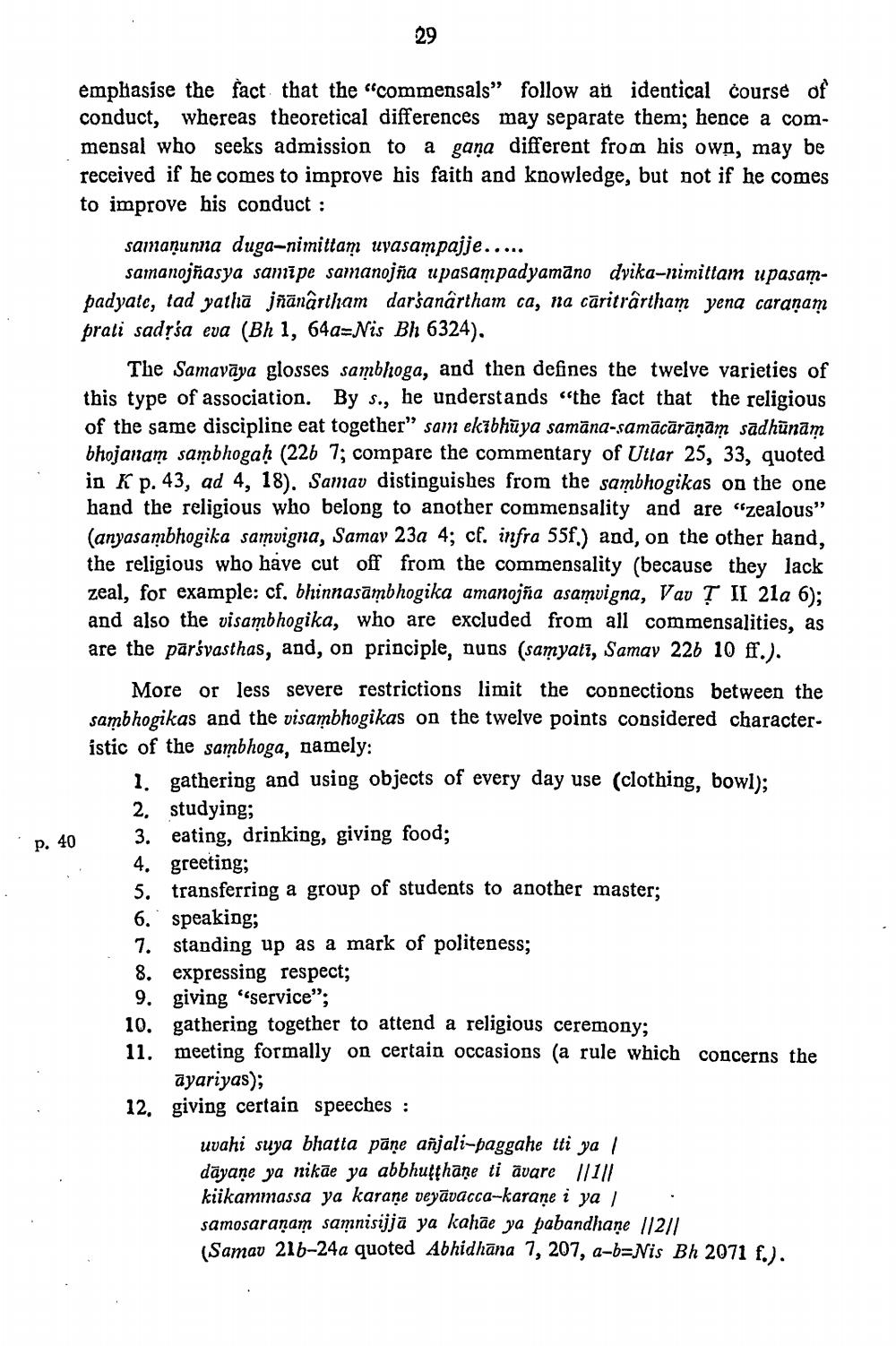________________
emphasise the fact that the commensals" follow an identical course of conduct, whereas theoretical differences may separate them; hence a commensal who seeks admission to a gana different from his own, may be received if he comes to improve his faith and knowledge, but not if he comes to improve his conduct :
samaņunna duga-nimittam uyasampajje.....
samanojñasya samīpe samanojña upasampadyamāno dvika-nimittam upasampadyate, tad yatlā jñānârtham darsanârtham ca, na caritrartham yena caranam prati sadša eva (Bh 1, 64a=Nis Bh 6324).
The Samavāya glosses sambhoga, and then defines the twelve varieties of this type of association. By s., he understands “the fact that the religious of the same discipline eat together” sam ekibhūya samāna-samācārāņām sadhūnām bhojanam sambhogaḥ (226 7; compare the commentary of Uttar 25, 33, quoted in K p. 43, ad 4, 18). Samav distinguishes from the sambhogikas on the one hand the religious who belong to another commensality and are "zealous" (anyasambhogika samvigna, Samay 23a 4; cf. infra 55f) and, on the other hand, the religious who have cut off from the commensality (because they lack zeal, for example: cf, bhinnasambhogika amanojna asamvigna, Vav T II 21a 6); and also the visambhogika, who are excluded from all commensalities, as are the pārsvasthas, and, on principle, nuns (samyatī, Samay 226 10 ff.).
More or less severe restrictions limit the connections between the sambhogikas and the visambhogikas on the twelve points considered characteristic of the sambhoga, namely:
1. gathering and using objects of every day use (clothing, bowl); 2. studying; 3. eating, drinking, giving food; 4. greeting; 5. transferring a group of students to another master; 6. speaking; 7. standing up as a mark of politeness;
expressing respect; 9. giving "service”; 10. gathering together to attend a religious ceremony; 11. meeting formally on certain occasions (a rule which concerns the
āyariyas); 12, giving certain speeches :
p. 40
uvahi suya bhatta pāne añjali-paggahe tti ya 1 dāyane ya nikāe ya abbhufthane ti avare /111/ kiikammassa ya karane veyāvacca-karane i ya/ . samosaranam samnisijja ya kahāe ya pabandhane (12|| Samav 21b-24a quoted Abhidhāna 7, 207, a-b=Nis Bh 2071 f.).




